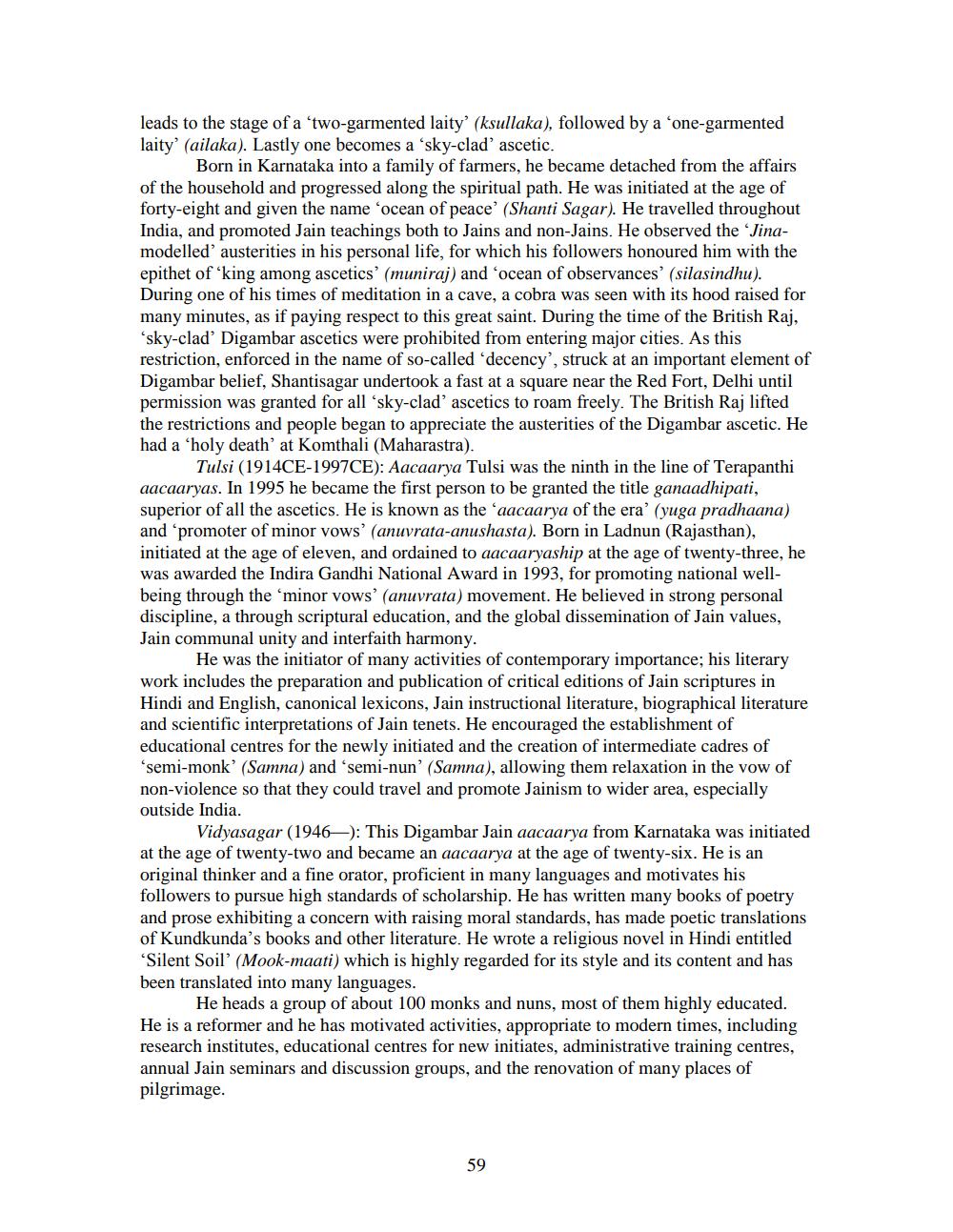________________
leads to the stage of a two-garmented laity' (ksullaka), followed by a 'one-garmented laity' (ailaka). Lastly one becomes a 'sky-clad' ascetic.
Born in Karnataka into a family of farmers, he became detached from the affairs of the household and progressed along the spiritual path. He was initiated at the age of forty-eight and given the name 'ocean of peace' (Shanti Sagar). He travelled throughout India, and promoted Jain teachings both to Jains and non-Jains. He observed the 'Jinamodelled' austerities in his personal life, for which his followers honoured him with the epithet of 'king among ascetics' (muniraj) and 'ocean of observances' (silasindhu). During one of his times of meditation in a cave, a cobra was seen with its hood raised for many minutes, as if paying respect to this great saint. During the time of the British Raj, 'sky-clad' Digambar ascetics were prohibited from entering major cities. As this restriction, enforced in the name of so-called 'decency', struck at an important element of Digambar belief, Shantisagar undertook a fast at a square near the Red Fort, Delhi until permission was granted for all 'sky-clad' ascetics to roam freely. The British Raj lifted the restrictions and people began to appreciate the austerities of the Digambar ascetic. He had a "holy death' at Komthali (Maharastra).
Tulsi (1914CE-1997CE): Aacaarya Tulsi was the ninth in the line of Terapanthi aacaaryas. In 1995 he became the first person to be granted the title ganaadhipati, superior of all the ascetics. He is known as the 'aacaarya of the era' (yuga pradhaana) and promoter of minor vows' (anuvrata-anushasta). Born in Ladnun (Rajasthan), initiated at the age of eleven, and ordained to aacaaryaship at the age of twenty-three, he was awarded the Indira Gandhi National Award in 1993, for promoting national wellbeing through the minor vows' (anuvrata) movement. He believed in strong personal discipline, a through scriptural education, and the global dissemination of Jain values, Jain communal unity and interfaith harmony.
He was the initiator of many activities of contemporary importance; his literary work includes the preparation and publication of critical editions of Jain scriptures in Hindi and English, canonical lexicons, Jain instructional literature, biographical literature and scientific interpretations of Jain tenets. He encouraged the establishment of educational centres for the newly initiated and the creation of intermediate cadres of 'semi-monk' (Samna) and 'semi-nun' (Samna), allowing them relaxation in the vow of non-violence so that they could travel and promote Jainism to wider area, especially outside India.
Vidyasagar (1946): This Digambar Jain aacaarya from Karnataka was initiated at the age of twenty-two and became an aacaarya at the age of twenty-six. He is an original thinker and a fine orator, proficient in many languages and motivates his followers to pursue high standards of scholarship. He has written many books of poetry and prose exhibiting a concern with raising moral standards, has made poetic translations of Kundkunda's books and other literature. He wrote a religious novel in Hindi entitled 'Silent Soil' (Mook-maati) which is highly regarded for its style and its content and has been translated into many languages.
He heads a group of about 100 monks and nuns, most of them highly educated. He is a reformer and he has motivated activities, appropriate to modern times, including research institutes, educational centres for new initiates, administrative training centres, annual Jain seminars and discussion groups, and the renovation of many places of pilgrimage.
59




